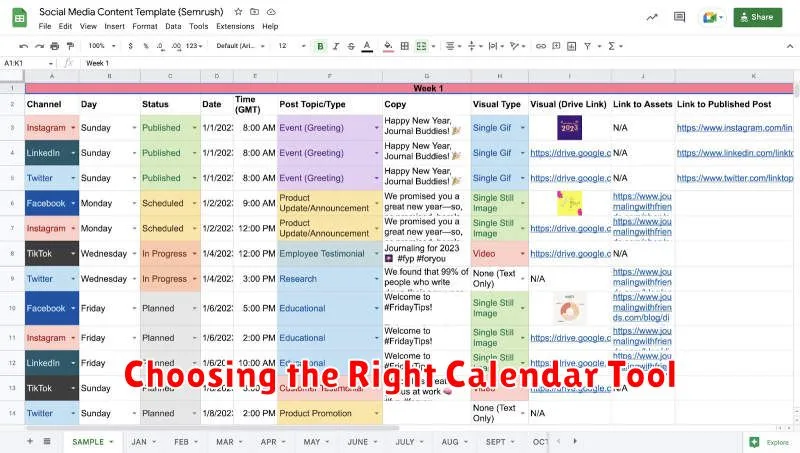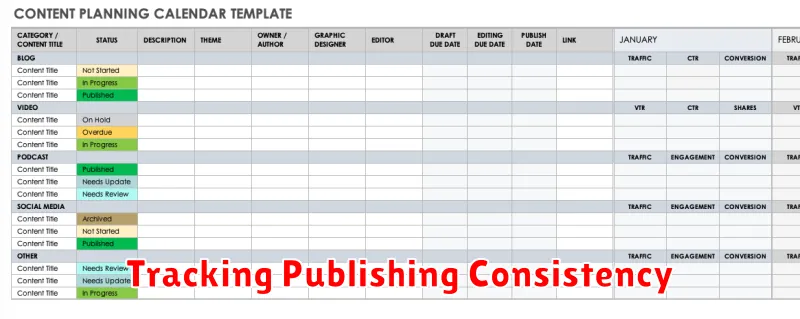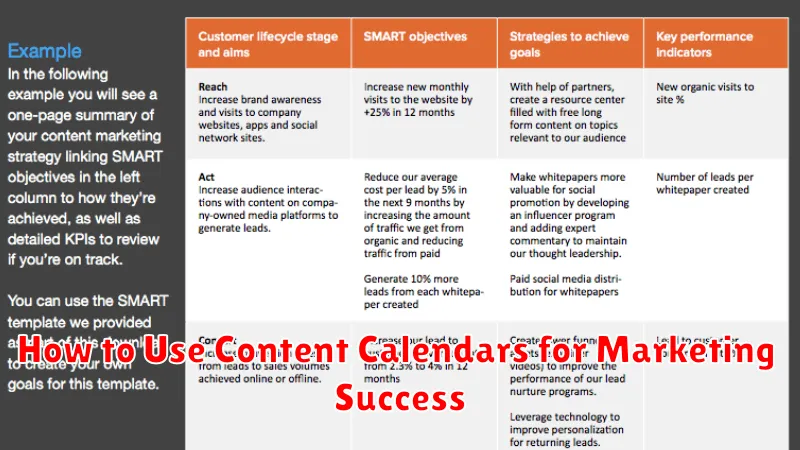In today’s dynamic digital landscape, content marketing plays a pivotal role in achieving marketing success. A well-defined content calendar is an indispensable tool for organizing and streamlining your content marketing efforts. This allows for strategic content creation and distribution, maximizing reach and impact. Learn how to leverage the power of a content calendar to drive engagement, generate leads, and ultimately achieve your marketing goals.
This comprehensive guide will explore the essential steps in creating and utilizing a content calendar for optimal marketing success. We’ll delve into the intricacies of planning, scheduling, and executing your content strategy using a content calendar. Discover how to align your content with your overall marketing objectives, target your desired audience effectively, and measure the success of your content marketing initiatives using a strategically designed content calendar.
Benefits of a Content Calendar
A content calendar offers numerous advantages for your marketing strategy. It provides organization and consistency, ensuring a regular flow of content across different platforms. This consistency helps build brand awareness and audience engagement.
With a content calendar, you can plan ahead and create content strategically. This allows you to align your content with marketing campaigns and seasonal trends, maximizing their impact. It also helps you avoid last-minute rushes and maintain a high quality of work.
Improved team collaboration is another key benefit. A shared content calendar keeps everyone on the same page, facilitating communication and streamlining the content creation process. It allows team members to see what’s coming up, who’s responsible for what, and when deadlines are approaching.
Finally, a content calendar enables better content performance analysis. By tracking what content is published when, you can analyze its effectiveness and identify what resonates with your audience. This data-driven approach allows you to optimize future content for better results.
Planning Topics Strategically
A well-structured content calendar hinges on strategically planned topics. This involves understanding your target audience and aligning content with their needs and interests. Consider what questions they have, what challenges they face, and what information they seek.
Keyword research plays a crucial role in topic selection. Identifying relevant keywords helps you understand what your audience is searching for and allows you to tailor your content accordingly. This boosts your search engine optimization (SEO) efforts and increases organic visibility.
Think about the overall marketing objectives. Are you aiming to drive traffic, generate leads, or build brand awareness? Choose topics that directly support these goals. For example, if your objective is lead generation, consider topics that offer valuable resources in exchange for contact information.
Finally, analyze your competitors’ content. Identifying gaps and opportunities allows you to create unique and valuable content that sets you apart. This also provides insights into trending topics and audience engagement patterns.
Choosing the Right Calendar Tool

Selecting the right calendar tool is crucial for effectively managing your content marketing strategy. Several factors should influence your decision, including team size, budget, and required features.
For small teams with basic needs, a free spreadsheet or a simple project management tool might suffice. These options offer basic scheduling and task management capabilities. However, as your team and content volume grow, you may require more advanced features.
Dedicated content calendar software offers more robust functionality, including content workflow management, collaboration features, social media scheduling, and analytics integration. These tools can streamline your content creation process and improve team communication.
Consider your budget when making your choice. While free options exist, paid tools often provide greater flexibility, advanced features, and dedicated support. Evaluate the features offered by each tool and choose one that aligns with your specific content marketing goals.
Tracking Publishing Consistency

Consistency is key for content marketing success. A content calendar allows you to schedule and track your publishing frequency, ensuring a steady flow of content to your audience.
By visualizing your planned content, you can easily identify potential gaps or overlaps in your publishing schedule. This foresight allows for adjustments and maintains a consistent presence.
Use your content calendar to monitor actual publishing dates against planned dates. This helps identify any bottlenecks in your content creation process and allows you to address them proactively.
Tracking your consistency allows you to analyze the impact on key metrics. For example, does a consistent publishing schedule correlate with increased website traffic or engagement? This data informs future content strategies.
Reviewing and Adapting Monthly
Monthly reviews are crucial for maintaining content calendar effectiveness. This process allows for adjustments based on performance data and emerging trends.
Start by analyzing key metrics. How did your content perform against your goals? Were engagement and reach targets met? Which pieces resonated most with your audience?
Based on this data, adapt your upcoming monthly plan. Don’t be afraid to shift focus, reallocate resources, or experiment with new content formats. Market trends change quickly; your content calendar should be flexible enough to accommodate these shifts.
Consider these key questions during your review:
- What content performed best and why?
- What content underperformed and why?
- Are there any emerging trends we need to address?
- Are our target audience’s needs changing?

